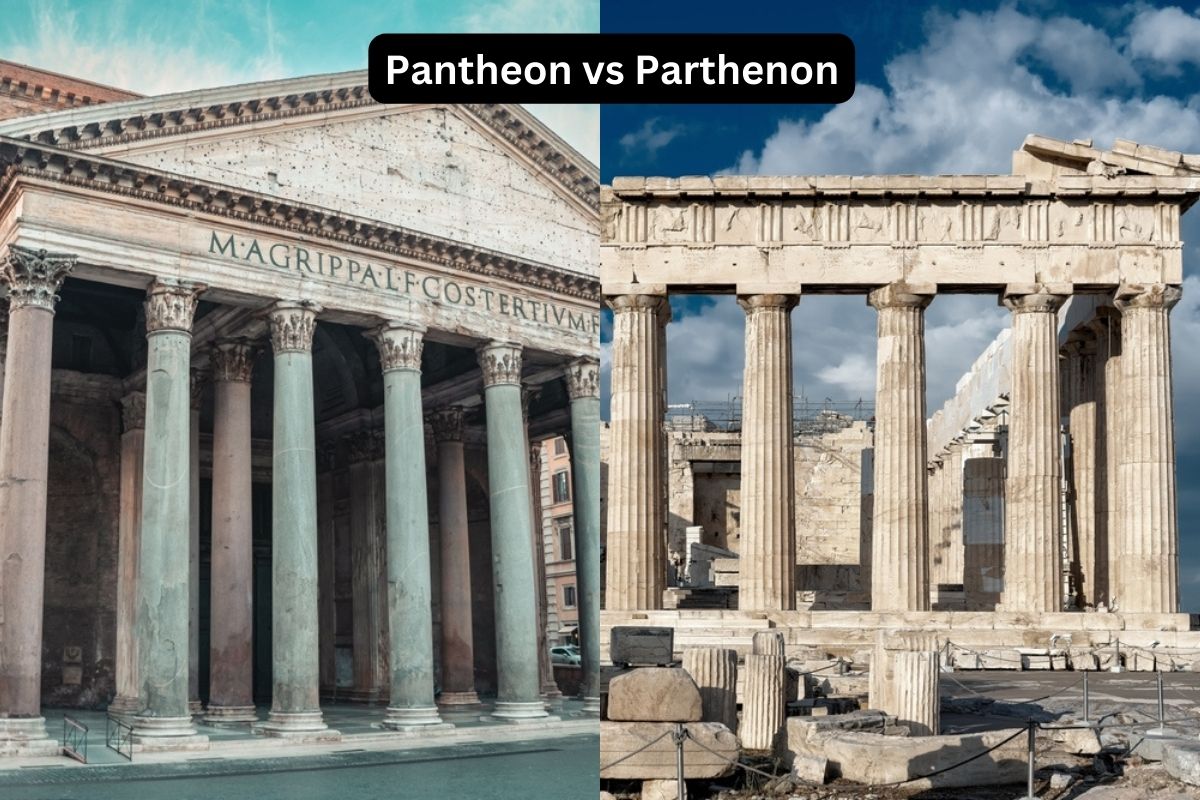The Pantheon and the Parthenon are two of the most iconic structures in the world, both known for their impressive architecture and rich history.
While they may sound similar, there are significant differences between these two structures that are worth exploring.
In this article, we will take a closer look at the Pantheon and the Parthenon, highlighting their unique features and discussing the key differences between them.
| Feature | Pantheon | Parthenon |
|---|---|---|
| Location and Culture | Rome, Italy (Roman) | Athens, Greece (Greek) |
| Dedication and Deities | All Roman gods | Goddess Athena |
| Architectural Style | Roman, with massive dome and oculus | Greek Doric order, with columns |
| Historical Period | 118-125 A.D. | 447-432 B.C. |
| Current State | Well-preserved, now a church | Mainly ruins, iconic ancient symbol |
| Cultural Significance | Influenced Western architecture | Symbolizes ancient Greek civilization |
Pantheon vs Parthenon: Understanding the Key Differences
The Pantheon is a temple located in Rome, Italy, and is considered one of the most remarkable buildings in the world. It was built in 118 AD by Emperor Hadrian and is known for its large dome, which is considered a masterpiece of engineering.
The temple was originally built as a place of worship for all the gods of ancient Rome and is now a popular tourist attraction, attracting millions of visitors each year.
Also Read: Acropolis vs Parthenon
On the other hand, the Parthenon is a temple located on the Acropolis in Athens, Greece. It was built between 447 and 432 BC and is dedicated to the goddess Athena, who was considered the patron of Athens.
The Parthenon is also known for its impressive architecture and is considered one of the most significant surviving buildings of ancient Greece.
Historical Context
Origins of the Pantheon
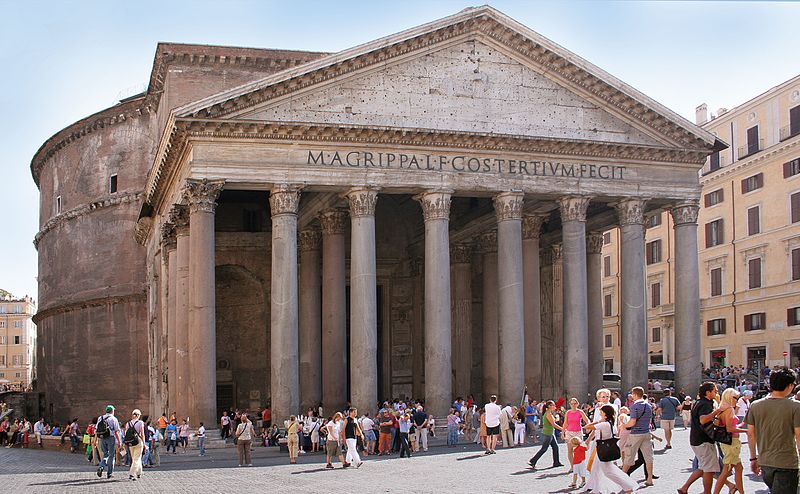
The Pantheon is a former Roman temple that dates back to 126 AD. It was commissioned by Emperor Hadrian and is located in Rome, Italy.
The Pantheon was originally built as a temple to all the gods of Ancient Rome, but it has since been converted into a Catholic church. The name “Pantheon” comes from the Greek words “pan” meaning “all” and “theos” meaning “gods.”
The Pantheon is known for its unique architecture, particularly its massive dome. The dome is made of concrete and is one of the largest unsupported domes in the world. The interior of the Pantheon is also impressive, with intricate marble floors and columns.
Origins of the Parthenon
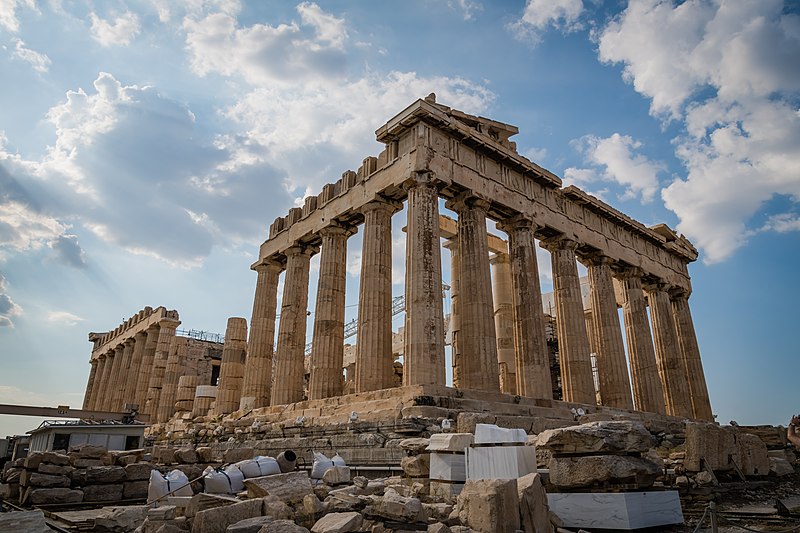
The Parthenon is a former temple located on the Acropolis in Athens, Greece. It was built between 447 and 438 BC and was dedicated to the goddess Athena. The Parthenon was designed by the architects Ictinus and Callicrates, and the sculptor Phidias was responsible for the decorative elements.
The Parthenon is considered one of the greatest examples of ancient Greek architecture. It features a rectangular floor plan, columns, and a pediment with intricate sculptures.
The Parthenon is also known for its use of optical illusions, such as the slight curvature of the columns and the slight bulge in the center of the floor.
Overall, the Pantheon and the Parthenon are both impressive examples of ancient architecture. While the Pantheon is a Roman temple and the Parthenon is a Greek temple, they both showcase the skill and creativity of ancient architects and builders.
Architectural Design
Pantheon Architecture
The Pantheon, located in Rome, Italy, is a prime example of ancient Roman architecture. The structure was built in 118 AD as a temple to all the gods of Rome.
The Pantheon’s most notable feature is its dome, which is made of concrete and is one of the largest unsupported domes in the world. The dome has an oculus, or opening, at the top that allows natural light to enter the building. The dome’s thickness decreases as it rises, which helps to reduce the weight of the structure.
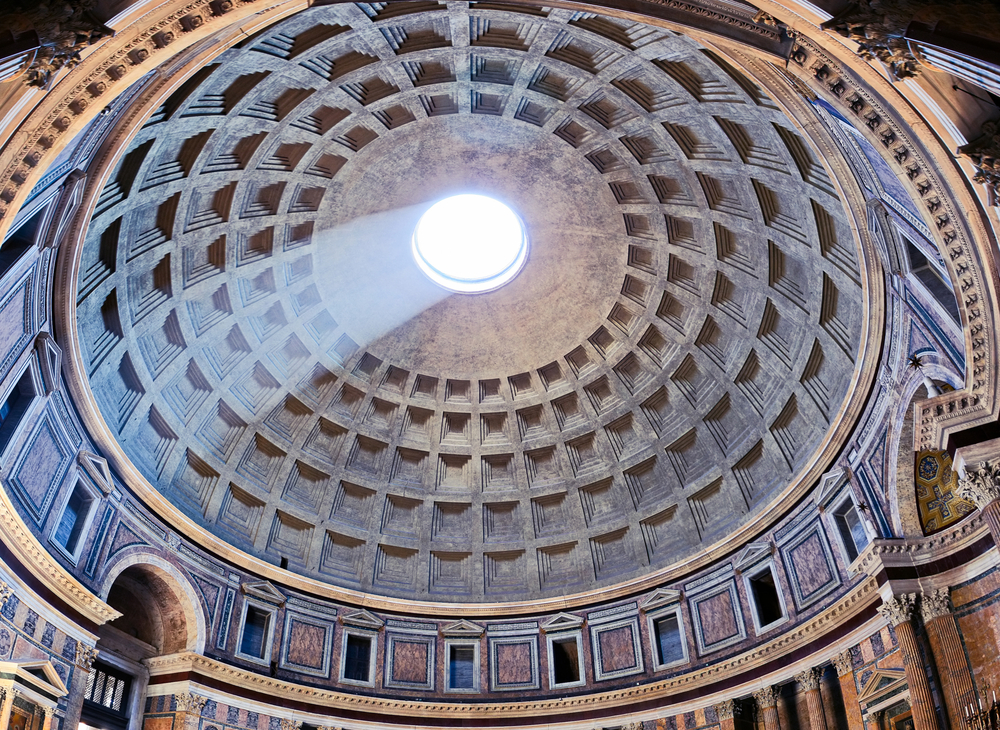
The Pantheon’s facade is made of marble and features eight Corinthian columns in the front. The interior of the building is circular and features various niches and alcoves for statues and other decorations. The floor is made of marble and features geometric patterns.
Parthenon Architecture
The Parthenon, located in Athens, Greece, is a temple dedicated to the goddess Athena. The structure was built in the 5th century BC and is an example of ancient Greek architecture. The Parthenon’s most notable feature is its pediment, which is a triangular gable on the roof that features sculptures.
The Parthenon’s facade is made of marble and features eight Doric columns in the front. The interior of the building is rectangular and features a central room called the naos, which housed a statue of Athena. The floor is made of marble and features various patterns.
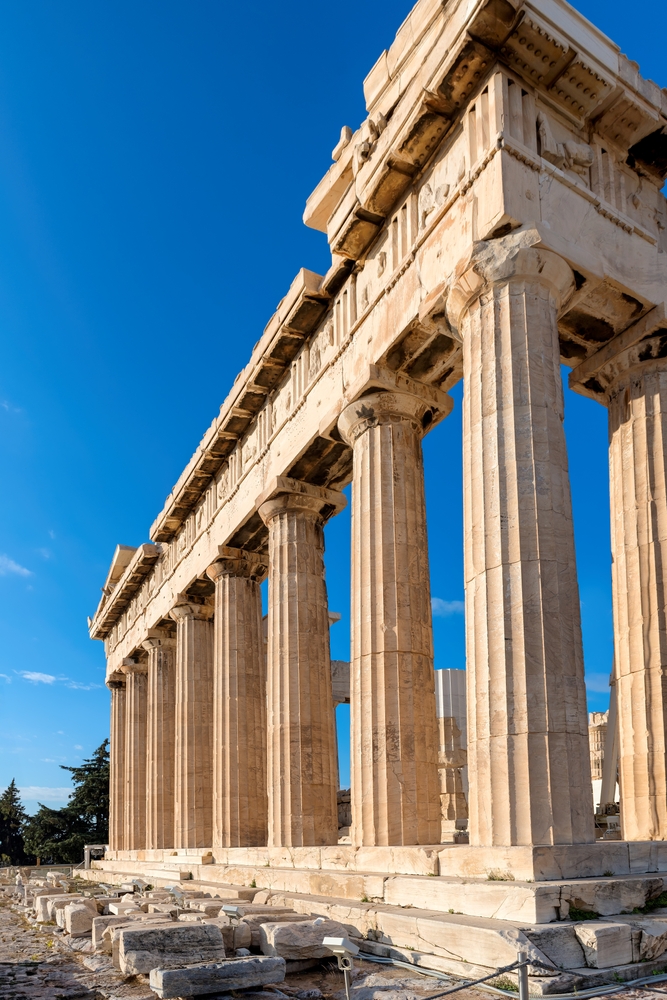
In summary, the Pantheon and Parthenon are two iconic structures with distinct architectural designs. While the Pantheon features a circular interior with a massive concrete dome and Corinthian columns, the Parthenon has a rectangular interior with a pediment and Doric columns. Both structures are marvels of ancient architecture and continue to inspire architects and designers today.
Cultural Significance
Religious Role of the Pantheon
The Pantheon was originally built as a temple dedicated to all the gods of Ancient Rome. It was believed that the gods watched over the city and protected it from harm.
The temple’s design was intended to emphasize the power and might of the gods, with its large dome and grand entrance. The Pantheon was also used as a place of worship and sacrifice, where people would come to pray and offer gifts to the gods.
Religious Role of the Parthenon
The Parthenon was built as a temple dedicated to the goddess Athena, the patron goddess of Athens. The temple was designed to showcase the power and might of Athena, with its massive columns and intricate sculptures.
The Parthenon was also used as a place of worship and sacrifice, where people would come to pray and offer gifts to Athena.
Political Influence in Ancient Times
Both the Pantheon and the Parthenon played important roles in the political life of their respective cities. In Ancient Rome, the Pantheon was used as a meeting place for the Senate and other political gatherings. It was also used as a place to celebrate military victories and other important events.
In Ancient Athens, the Parthenon was used as a symbol of the city’s power and wealth. The temple was built during the height of Athens’ golden age, and it served as a testament to the city’s cultural and intellectual achievements. The Parthenon was also used to display the city’s wealth and prestige, with its elaborate sculptures and decorations.
Overall, both the Pantheon and the Parthenon played important roles in the religious and political life of their respective cities. They are both iconic symbols of Ancient Rome and Athens, and they continue to inspire awe and wonder in visitors from around the world.
Geographical Location
Pantheon in Rome
The Pantheon is located in the heart of Rome, Italy, specifically in the Piazza della Rotonda. It is surrounded by a bustling city center and is easily accessible by public transportation.
The Pantheon is situated in the Campus Martius, an ancient Roman district that was once used for military training and athletic competitions. Today, the area is a popular tourist destination and is home to many shops, restaurants, and hotels.
Parthenon in Athens
The Parthenon is located on the Acropolis, a rocky hill overlooking the city of Athens, Greece. The Acropolis is a UNESCO World Heritage site and is home to several ancient Greek buildings, including the Parthenon.
The location of the Parthenon provides breathtaking views of the city below and is a popular tourist destination. The Acropolis is located in the heart of Athens and is easily accessible by public transportation.
In summary, the Pantheon is located in Rome, Italy, in the bustling city center, while the Parthenon is located on the Acropolis in Athens, Greece, providing stunning views of the city.
Art and Decoration
Interior Artwork of the Pantheon
The interior of the Pantheon is adorned with stunning artwork, including intricate marble floors, colorful frescoes, and stunning mosaics. The dome of the Pantheon is decorated with a series of sunken panels, which are adorned with rosettes and other intricate designs.
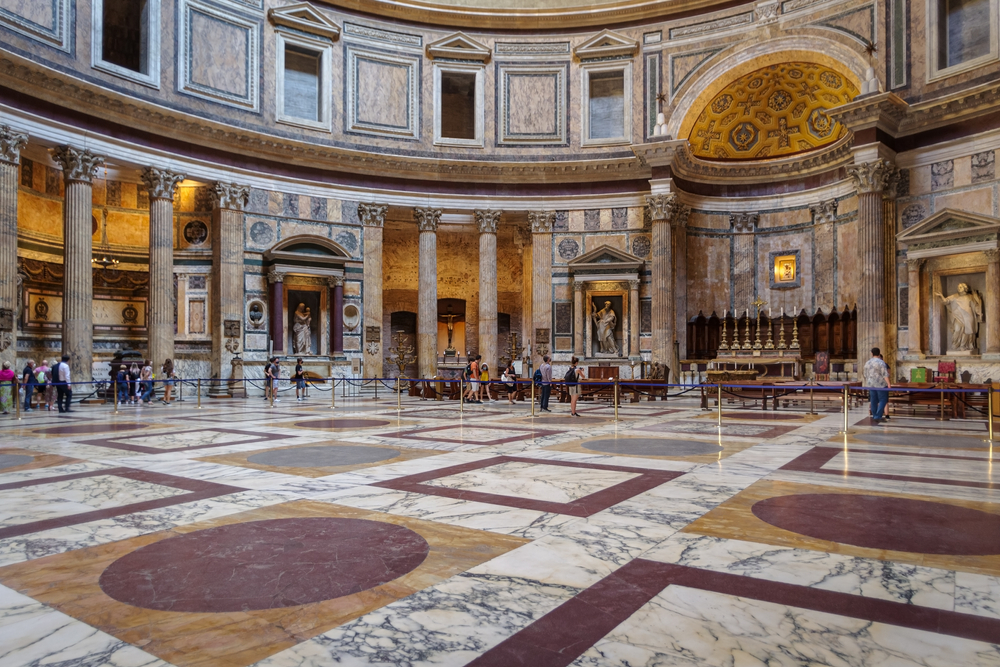
The walls of the interior are also decorated with marble pilasters and niches, which house statues of various gods and goddesses.
One of the most impressive features of the Pantheon’s interior is the oculus, a circular opening at the top of the dome that allows natural light to filter into the space. The oculus is also a key element of the building’s design, as it helps to distribute weight and prevent the dome from collapsing.
Sculptures and Friezes of the Parthenon
The Parthenon, on the other hand, is known for its impressive sculptures and friezes. The temple’s pediments are adorned with large sculptures depicting scenes from Greek mythology, including the birth of Athena and the battle between the gods and the giants.
The Parthenon’s frieze, which wraps around the exterior of the temple, is also a notable feature. The frieze depicts a procession of Athenians, including men, women, and children, as they make their way to the temple to present offerings to the goddess Athena.

In addition to the pediments and frieze, the Parthenon also features a number of metopes, which are rectangular panels that are carved with scenes from Greek mythology. The metopes depict a variety of themes, including the battle between the Lapiths and Centaurs, and the battle between the Greeks and the Amazons.
Overall, both the Pantheon and the Parthenon are known for their impressive art and decoration. While the Pantheon features intricate mosaics and frescoes, the Parthenon is home to some of the most impressive sculptures and friezes in the world.
Preservation and Restoration
Preservation and restoration efforts have been ongoing for both the Pantheon and the Parthenon to ensure their longevity and historical significance for generations to come.
Conservation Efforts for the Pantheon
The Pantheon has undergone various conservation efforts throughout the centuries, with the most notable being the restoration work carried out in the 18th century by architect Giovanni Battista Piranesi. In the 20th century, the Italian government implemented a program to conserve the building’s interior, including its marble floors, walls, and decorative elements.
Today, the Pantheon is carefully monitored and maintained to ensure that it remains structurally sound. Measures have been put in place to prevent water damage and to control the humidity levels inside the building. The use of candles and incense has also been limited to protect the interior from smoke damage.
Restoration Projects of the Parthenon
The Parthenon, on the other hand, has undergone several restoration projects in recent years due to its deteriorating condition. The most extensive restoration project began in 1983 and is still ongoing.
The project involves the removal of previous restoration materials and the replacement of damaged or missing marble. The use of stainless steel and titanium has also been incorporated to reinforce the structure and prevent future damage.
Despite these efforts, controversy surrounds the Parthenon restoration project, with some critics arguing that the use of modern materials detracts from the authenticity of the ancient structure.
Overall, both the Pantheon and the Parthenon are carefully preserved and restored to maintain their historical significance and cultural value.
Modern-Day Relevance
Tourism and Economy
The Pantheon and Parthenon are both significant tourist attractions, drawing millions of visitors each year. The tourism industry around these ancient structures provides a significant boost to the local economy.
The Pantheon, located in Rome, Italy, attracts tourists from all over the world, who come to admire its impressive architecture and rich history. Similarly, the Parthenon, located in Athens, Greece, is a popular tourist destination, attracting visitors who are interested in exploring the ancient Greek civilization.
Cultural Heritage and Identity
The Pantheon and Parthenon are not just tourist attractions; they also hold significant cultural and historical value. These ancient structures are a testament to the architectural and engineering skills of the ancient civilizations that built them.
They are also symbolic of the cultural heritage and identity of the countries in which they are located. The Pantheon, for example, is a symbol of the Roman Empire’s power and influence, while the Parthenon represents the greatness of ancient Greece.
In conclusion, the Pantheon and Parthenon are two of the most significant ancient structures in the world, both in terms of their historical and cultural value, as well as their modern-day relevance. These structures are not just tourist attractions but also serve as a reminder of the rich cultural heritage and identity of the countries in which they are located.
